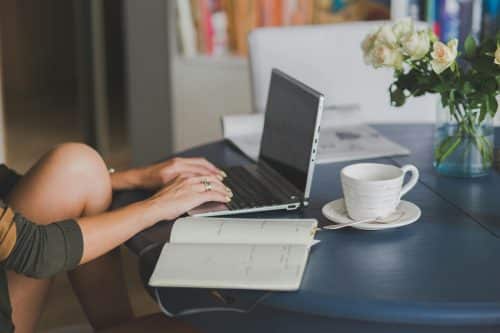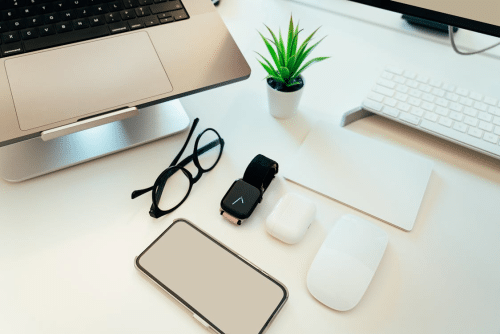How to Create a Workspace That Inspires Creativity
Brian Taylor June 12, 2025
Whether you’re a startup founder, developer, designer, or remote professional, your physical environment plays a vital role in how you think and perform. In today’s hybrid work era, more people are asking: how do you create a workspace that inspires creativity?
This isn’t just about aesthetics or Pinterest boards. It’s about using environmental psychology, neuroscience, and smart design to stimulate creative thinking, problem-solving, and deep focus. The modern workspace isn’t just where you work—it’s part of how you work.

How You Create a Workspace Impacts Creativity
Research from the University of Exeter shows that individuals working in enriched environments—those featuring plants, natural light, and personalized decor—are 15% more productive and report higher job satisfaction. But more critically, they experience increased cognitive flexibility, a core factor in creative performance.
Further supporting this, a 2021 study in Frontiers in Psychology found that elements like lighting, sound, layout, and personalization directly impact divergent thinking—the mental process behind generating innovative ideas.
In essence, how you create a workspace plays a direct role in either amplifying or diminishing your creative energy.
Key Principles to Create a Workspace That Sparks Creativity
1. Create a Workspace That Balances Order and Stimulation
Too much clutter can derail focus. But excessive minimalism may dull creative spark. Psychologists recommend finding a middle ground known as “stimulating simplicity.”
Practical ways to create this balance:
- Keep essential tools visible but organized
- Include curated visual cues—mood boards, sketches, or art
- Avoid visual noise from unrelated or excessive items
A workspace that is visually engaging yet focused can activate creative flow without cognitive overload.
2. Create a Workspace with Optimal Natural Light
Natural light doesn’t just look good—it improves your brain function. Exposure to daylight increases serotonin, which boosts mood and alertness—two key ingredients in creative work.
Tips to enhance lighting:
- Position your workspace near a window
- Use translucent blinds to soften glare
- Add daylight-mimicking LED lamps if natural light is limited
A 2018 Cornell University study found that natural lighting reduced eye strain and headaches by 84%, helping conserve the mental energy required for idea generation.
3. Design Zones When You Create a Workspace for Different Thinking Modes
Creativity involves a mix of focus, brainstorming, reflection, and iteration. To support this, create a workspace that includes multiple cognitive zones.
Examples of workspace zoning:
- Focus Zone: A tidy desk for deep work
- Ideation Zone: A wall for sticky notes, whiteboarding, or sketching
- Recharge Zone: A comfortable chair by a window for reading or pausing
Switching zones throughout your day provides the mental reset needed to keep ideas flowing.
4. Integrate Biophilic Design When You Create a Workspace
Biophilic elements—natural materials and greenery—can significantly elevate creativity and reduce cognitive fatigue.
Biophilic workspace ideas:
- Add low-maintenance plants or an herb garden
- Use natural textures (wood, wool, stone)
- Include artwork or décor inspired by nature
According to the Human Spaces study (2020), employees in biophilic-designed offices reported 15% higher creativity and 6% more wellbeing compared to conventional workspaces.
Personalization Helps You Create a Workspace That Works for You
Customizing your space isn’t just aesthetic—it builds emotional engagement. When you create a workspace that reflects your personality and achievements, it becomes a tool for motivation.
Ideas for personalization:
- Showcase milestones (awards, product samples, positive client feedback)
- Select color schemes that match your creative energy or brand identity
- Include meaningful objects from past projects or travels
Even in shared or temporary environments, small personal touches foster a sense of ownership, which has been linked to increased persistence on complex tasks.
Sound Strategy: Create a Workspace That Matches Your Creative Rhythm
Not everyone works best in silence. For some, ambient sound or music boosts idea flow. The key is to align your sound environment with your creative tasks.
Sound strategies to consider:
- Use white or brown noise for deep focus
- Play instrumental or ambient music during ideation
- Change physical environments for new auditory inputs (like cafés or coworking hubs)
- Use noise-canceling headphones to block distractions
The ability to create a workspace with flexible soundscapes lets you work with, not against, your mental rhythm.
Digital Setup Matters When You Create a Workspace for Innovation
Digital environments are just as important as physical ones. Cluttered desktops, too many open tabs, and constant alerts can quietly erode your creative edge.
Optimize your digital workspace:
- Use project boards (like Notion, Miro, or Trello)
- Maintain organized digital folders and visual mood boards (e.g., Milanote)
- Automate repetitive tasks where possible
- Disable notifications during creative blocks of time
When you create a workspace digitally, think of it as your creative dashboard—structured, intuitive, and distraction-free.
Emerging Trends That Help You Create a Workspace for Tomorrow
AI-Driven Environmental Control
Tools like Ori Living or Casambi allow smart adjustments to lighting, temperature, and sound based on your activity or mental state. These systems help optimize your environment without manual effort—ideal for sustaining creative performance.
Neurodesign in Modern Teams
Tech-forward companies are hiring neurodesign experts to create workspaces that align with how the brain ideates and prototypes. From color psychology to sensory zoning, workspace design is becoming a cognitive science.
Virtual and Mixed Reality Environments
VR tools like Gravity Sketch and Tilt Brush let creators work in immersive 3D environments, offering distraction-free zones for sketching, building, or exploring concepts.
These advancements expand the definition of what it means to create a workspace, making it more adaptive and intuitive.
Final Thoughts
Understanding how to create a workspace that inspires creativity isn’t a luxury—it’s a strategic advantage. Whether you’re launching a product, writing code, or planning a new campaign, your physical and digital surroundings influence every choice you make.
A space that invites focus, play, and experimentation makes creativity not just possible—but sustainable.
References:
- University of Exeter (2014). “The relative benefits of green versus lean office space.” https://www.researchgate.net/publication/264395358_The_Relative_Benefits_of_Green_Versus_Lean_Office_Space_Three_Field_Experiments
- Frontiers in Psychology (2021). “Workplace Design and Creative Performance.” https://www.frontiersin.org/journals/psychology/articles/10.3389/fpsyg.2021.805153/full
- Human Spaces Report (2020). “The Global Impact of Biophilic Design in the Workplace.” https://greenplantsforgreenbuildings.org/wp-content/uploads/2015/08/Human-Spaces-Report-Biophilic-Global_Impact_Biophilic_Design.pdf





